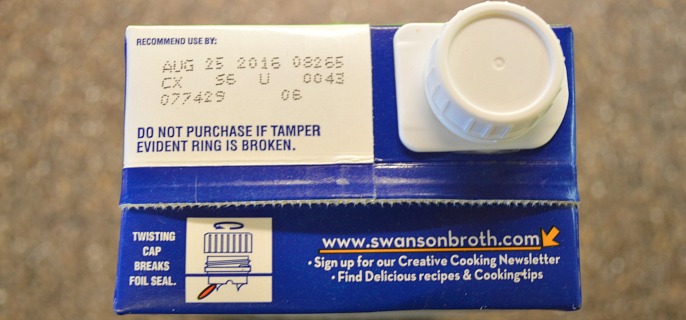
NORTHEAST OREGON NOW PHOTO
It’s very likely that many Oregonians who observe various expiration dates on products throw away food that may have lost some freshness and quality, but is still perfectly safe to consume.
Welcome to the world of food product dating in which terms such as “sell by”, “use by”, and “expires” all mean different things but collectively tend to muddle consumers as they decide whether or not to toss that product out. The Oregon Department of Agriculture wants to offer some clarity.
“These dates are something for consumers to look at and be aware of, but they are typically a quality issue that could affect the taste, odor, or appearance of the product,” says ODA food safety retail specialist Brian Hawkins. “For most products, it shouldn’t be a food safety concern.”
Most people have food products in their refrigerator, freezer, or in the pantry with dates that have long since passed. Depending on the product, the term accompanying the date, and how that product is stored, consumers can determine what to do with the food– eat it or delete it.
First, it’s important to know these dates are generally recommendations voluntarily offered by the food manufacturer. It’s an educated guess as to how long the product will last. In most cases, there is no requirement for these dates to be placed on products and no universal food dating system used by manufacturers or retailers. However, these dates are helpful and useful as long as the people reading them know their meaning.
“We do require that certain potentially hazardous food products past their date marking– best by, sell by, use by date– are identified or segregated so that a customer knows it’s past date,” says Hawkins. “These are items like meats and dairy products pre-packaged by the food manufacturer. The store can still sell the product, people can still buy it and consume it. But once the dates on these products have passed, they may be past their prime and food safety related issues may not be far behind.”
It is perfectly understandable for a food product to be discarded because it is no longer fresh. But an unfresh product should not be confused with an unsafe product.
“Sell by” is a date that is most instructive to retailers and is found on perishable foods such as fish, poultry, meat, bread, and dairy products. This date gives retailers a guide for how long the product should be displayed. Again, stores may offer products for sale after the “sell by” date has passed, which is perfectly legal. Consumers will usually want to purchase the product before its “sell by” date but they don’t have to worry about consuming it by that date as long as the food is properly stored. Generally, fresh meat, fish, and poultry should be cooked within two days of refrigeration after purchase. If those products have been placed in the freezer, there should no longer be any concern of the “sell by” date.
Terms such as “use by”, “best if used by”, and “best before” are also associated with freshness and quality of the food product. These terms and dates are generally found on shelf-stable products such as snack foods, cereals, and various canned products. The dates used indicate how long the product will likely remain at its best quality when unopened. The food is safe to eat even after the date has passed, although the product will gradually lose some of its original texture, color, and taste over time. How the product is stored is always a factor, especially for products that should be refrigerated after opening. A person’s eyes and nose are good tools to determine the quality of a shelf-stable food product.
Upon opening the container, consumers should look and smell the product. Anything that has developed an odor or questionable appearance should be discarded. The same holds true for products that have been opened and sitting in the refrigerator for a long period of time. Again, it’s generally a quality issue, not a food safety issue.
Retailers and suppliers are usually motivated to observe these dates and clear out the old stuff while bringing in the new.
“It’s not 100 percent but, for the most part, grocery stores are keeping a close eye on those products,” says Hawkins. “Between the distributor of the product and the store itself, they are in there rotating products.”
For consumers, the bottom line is that food product dates are worth paying attention to but not necessarily for food safety reasons. Those dates can help ensure the food you buy retains its quality. Of course, a lot depends on how the food is handled after purchase and how quickly it is consumed.









